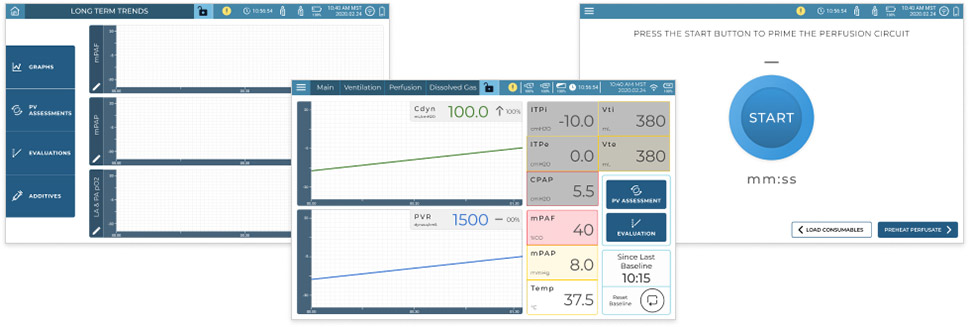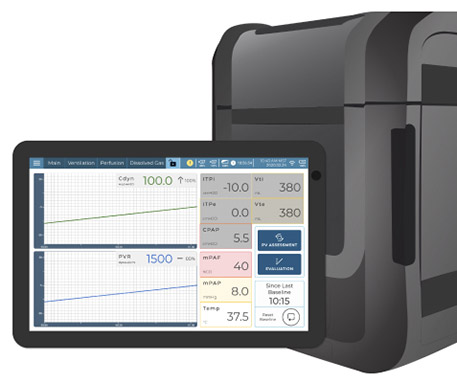Organ Transplant Technology
Increasing the Supply of Transplantable Lungs
Here’s a sobering fact: up to 20% of patients waiting for a lung transplant in the United States never get one. The story is much the same globally even though more than 4,600 lung transplants are performed worldwide every year – 55% in North America.
The average wait time in the U.S. is around two years for a single-lung transplant, and as long as three years for patients who require double-lung transplants. The extended delay is due not only to the fact that demand for organs exceeds supply, but to a strikingly low utilization rate – fewer than one in four donated lungs arrive in suitable condition for transplantation. Most people assume that a donated lung saves a life. Sadly, all too often the precious organ ends up in the trash, and the primary reason is that the lung simply did not withstand the rigors of transport. One forward-thinking medical device firm intended to change that.
ICS supported all phases of product development for the Class III lung perfusion system, including application development, UX/UI design and implementation and regulatory program management.
More Transplantable Lungs Mean More Lives Saved
The medtech innovator developed a revolutionary Ex Vivo Lung Perfusion (EVLP) system to keep donated lungs healthy during transport. The EVLP system can take organs that would otherwise have been discarded and actually convert them to usable organs, preserving them in a near-physiologic state for transplant. That means surgeons would be able to transplant more organs and help mitigate the critical organ shortage.
While preserving the lungs is certainly a complex challenge, it is not the only challenge associated with organ transport. The other major challenge involves data collection and visualization. With life or death on the line, the transplant physician is fully dependent on the new lung being completely viable and will not take the chance of transplanting an organ if the trip from the donor has unknowns that could impact organ health. For instance, was the organ stored correctly at all times, and not left sitting on someone’s desk? Was the lung delivered to the correct person at the expected time?
To provide the physician with this essential data, the company designed its EVLP system to capture and allow the physician to view and assess an organ’s entire physiological history – eliminating the need for worst-case guessing when deciding whether to transplant.

The Challenge of Developing the Ex Vivo Lung Perfusion System
Creating this next-gen technology, which elevates the level of care by using warm perfusion rather than the cold preservation approach common in the industry, was no easy feat. After developing a proof of concept prototype that focused on the hardware and mechanical aspects of the device, which is about the size and weight of a cold-storage cooler, the company hired an industrial design firm to help create a user interface (UI) that could be used by a variety of different types of users, such as transplant surgeons, respiratory therapists and organ procurement specialists.
The results were mixed. While the UI was attractive and relatively simple to navigate, it did not address important workflow-related needs nor support key protocol-related tasks. And while the UI allowed the device to be used by clinicians already familiar with other medtech equipment related to ventilation and respiration, it wasn’t geared toward the broader user base.
Since the UI didn’t meet the needs of this important user group, it was back to the drawing board. This time, their designers emphasized workflow – but they sacrificed usability for functionality.

Third Time’s the Charm
Still searching for a workable solution, the medtech company reached out to Integrated Computer Solutions (ICS), which has a reputation for understanding the delicate balancing act needed to design attractive, highly usable and market-relevant products.
“Compromising simplicity for functionality is not an effective approach to product design,” said ICS’ Director of Medical Programs Milton Yarberry. “Instead, cogent redesign is what’s needed. That’s the philosophy we used to approach the UX/UI for this high-impact product.”
To achieve success, the ICS team took a step back from the work that had been done previously. We took the time to carefully study the users, environments and novel clinical processes associated with the product to inform our decision making, and leveraged a well-recognized usability standard, IEC 62366, to methodically itemize and mitigate use errors.
“We designed the system’s interface in a way that respects our users’ advanced medical expertise while still ensuring the device is easy to use and provides all of the information needed for routine operation in a way that isn’t overwhelming or confusing,” explained Don Goetz, Associate Director of User Experience for ICS and its design studio Boston UX.
“Most UIs are designed to allow novice users to easily complete straightforward tasks,” he said. “But medical devices are designed for far more complex user interactions. They must present more expansive and more-complicated information while addressing workflow and environment – and still remain intuitive and easy to use. The UI we created provides the best possible view of essential information needed during organ transport.”
"We needed to cleanly display a lot of information, support a multitude of perfusion protocols, and design an interface appropriate for a variety of different users. That’s a tall order but one ICS skillfully achieved."
ICS’ UX/UI Blends Visual Appeal with Functionality
We designed large numbers and easy-to-read labels so that the user can accurately monitor the lung. We also made sure users could quickly access more detailed information if desired via convenient tabs at the top of the screen, and provided the ability to tap on an alert/error condition and quickly get to the precise information relevant to that condition.
And because the user is unlikely to engage with the device on a daily basis, ICS also created a convenient, step-by-step guide for loading and unloading lungs into and from the perfusion system – a handy reference that eliminates the need to consult a manual each time a user needs to operate the device. That’s important since transport can happen at any time, often in the middle of the night when the organ-retrieval professionals are likely tired.
The customer successfully tested the device and completed human lung transplants, and was most recently working to obtain U.S. Food and Drug Administration approval.
“The UX/UI that ICS designed perfectly blends visual appeal with functionality, making our EVLP easier to use and more appropriate for a broader user base than any other organ transport device on the market. The interface ICS designed gives us an exceptional competitive advantage.”